An interview with Liz Glynn
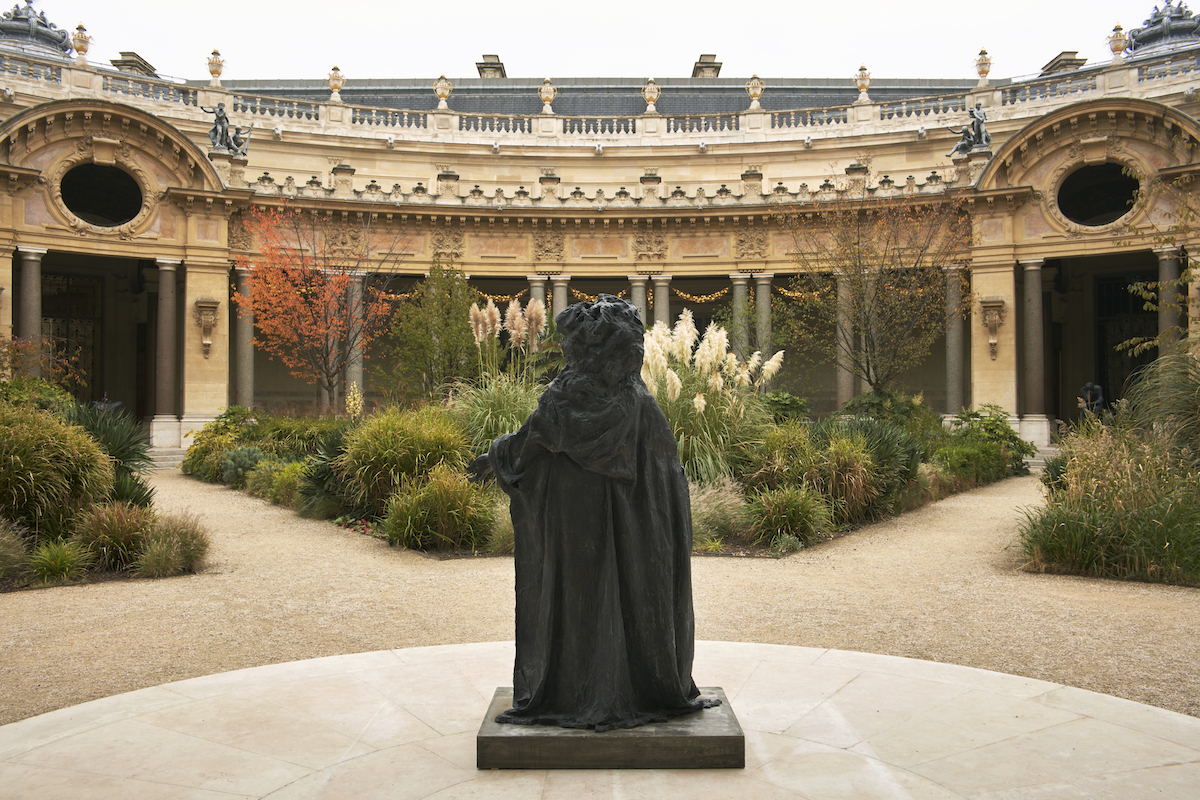
Liz Glynn. Untitled (after Balzac, with Burgher). 2014. Cast bronze. 71 × 46 × 23 in. View at Petit Palais, Paris. All works courtesy the artist and Paula Cooper Gallery, New York.
One person alone can create a work of art; it takes two to make a market. For Liz Glynn, the world’s cultural patrimony serves as raw material for sculpture and performances that probe the structure of our economy: how natural resources become commodities, how value rises and falls, and what happens to heritage (and love) when everything has a price tag. Modern markets demand ever greater speed, but Glynn’s art is a slower thing. Papier-mâché busts of ancient heroes, Gilded Age settees sculpted from concrete, Rodins recast in the garden of LACMA: each is the product of painstaking labor, and in each the obscure mechanisms of worth and wealth face the throwback of her own hand.
Glynn was born in Boston in 1981. As an undergraduate at Harvard she concentrated on photography — one reason, she says, that her art often relies on casts, models, and other sculptural techniques that index the outside world. Recently I went to her studio in east Los Angeles, where she’s lived for a decade; though it was the weekend, she and several assistants were finalizing new works for a major show, opening this October at MASS MoCA in New England. (One oblong tower near her desk, as tall as she is, takes its shape from a graph produced by the US Bureau of Labor Statistics.) As she described the show to me, she slalomed effortlessly between the most tangible concerns — how to cast a bronze, how to ship one across the country — and the most abstract questions of time and money. Value is fleeting, stuff is forever. × Jason Farago
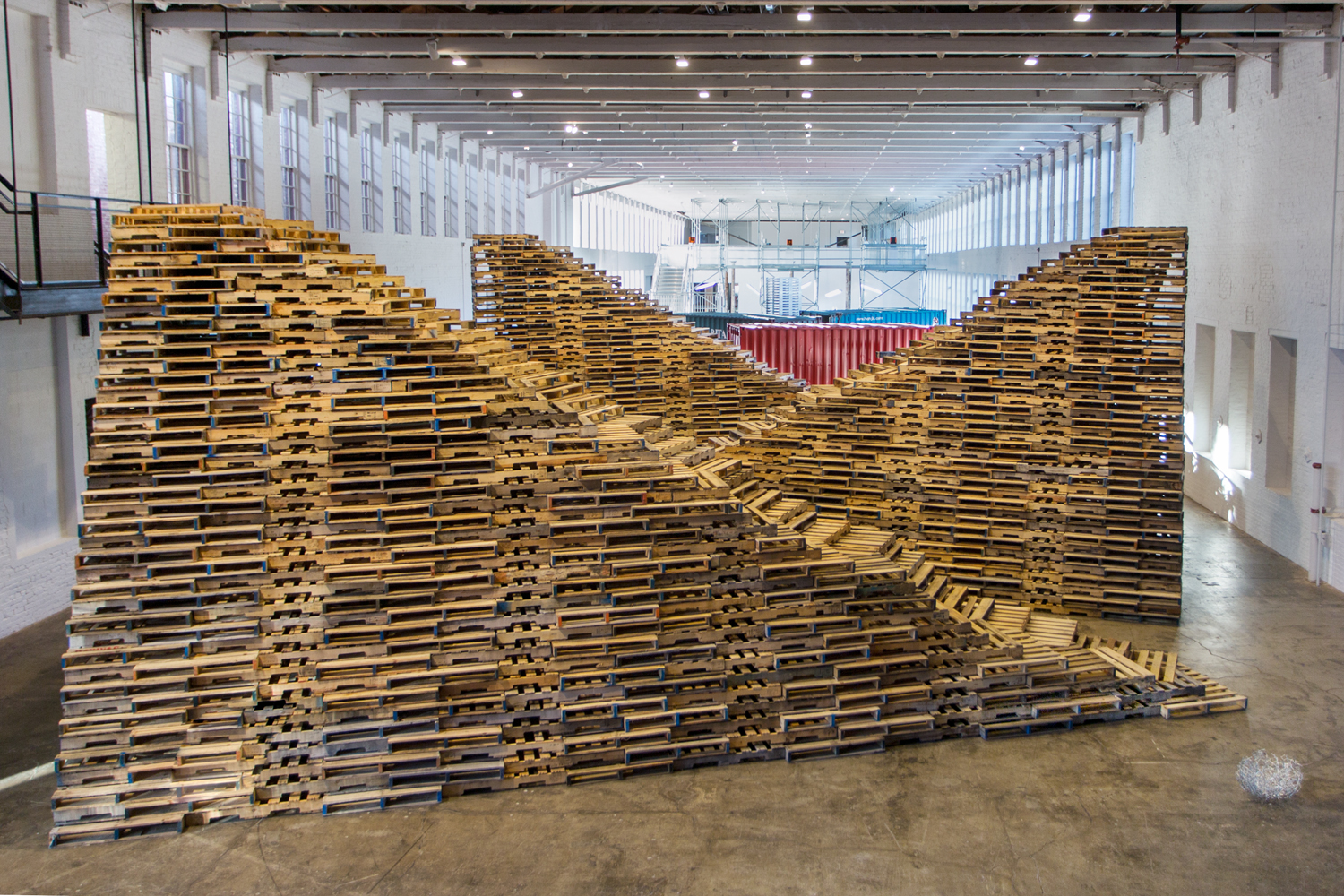
Your show at MASS MoCA is titled “The Archaeology of Another Possible Future,” and archaeology in your work seems to function in multiple ways: as a literal source of material, but more often as a metaphor.
I had just done two shows in New York with themes of archaeology: one at Paula Cooper [On the Possibility of Salvage] and one at SculptureCenter [Ransom Room], when I got the invitation from MASS MoCA. Initially I wanted to turn away from archaeology for the show. But the theme came back as I was thinking about what it meant to make sculpture in 2017, in the hands-on way that I do, when so much information is digital. So much value now exists purely as an abstraction.
Both in the art world and in the economy more generally.
Sure. And what is the future of stuff when a greater and greater part of our economy is abstract? The show is in some ways a meditation on what it means to make stuff in the digital age, and what will happen to all of the stuff that has been made up to this point in history.
I grew up outside of Boston, and MASS MoCA actually was the first place that I ever saw sculpture that made me want to make sculpture. It was Mona Hatoum’s Domestic Disturbance series. Until that point, sculpture for me had been these dumb little tabletop things we made in high school, and I just hated it. But Hatoum’s work was so aggressive, and so engaged with scale in relationship to the body, that it set something off in me.
Looking around your studio right now, it’s full of unique objects, clearly loved, down to these hand-thrown coffee mugs. And yet I would never consider you a sculptor in the classical sense that you were just describing: take a hunk of clay, shape it into some form, and put it on a pedestal.
I almost think of myself as a materialist philosopher, in some way. I work with ideas through material. There’s often a flat-footed critique of sculpture: oh, you’re just participating in capitalist commodity production by making objects. But I make things in the most inefficient way. Every piece has a different process, with different cycles of production.
I do a lot of mold-making and casting — probably because I studied photography before I studied sculpture, and I didn’t trust myself to hand-form anything for a very long time. Casting, inherently, has a reference, some index out in the real world, and that helps. I’m not someone who can come into the studio and just paint something pink. I just wouldn’t know what to do.
My process tends to involve sitting and reading for months, through thousands of pages, and then having time to forget most of it except a few details that bubble up. And then spending too much time thinking about how to make a sculpture. And then throwing myself physically at making it, sometimes with assistance, for very long days, when I ignore the computer and do nothing else and get incredibly dirty. It’s a very polar practice: this deep research element has to coexist with this other thing that’s just completely, utterly physical.
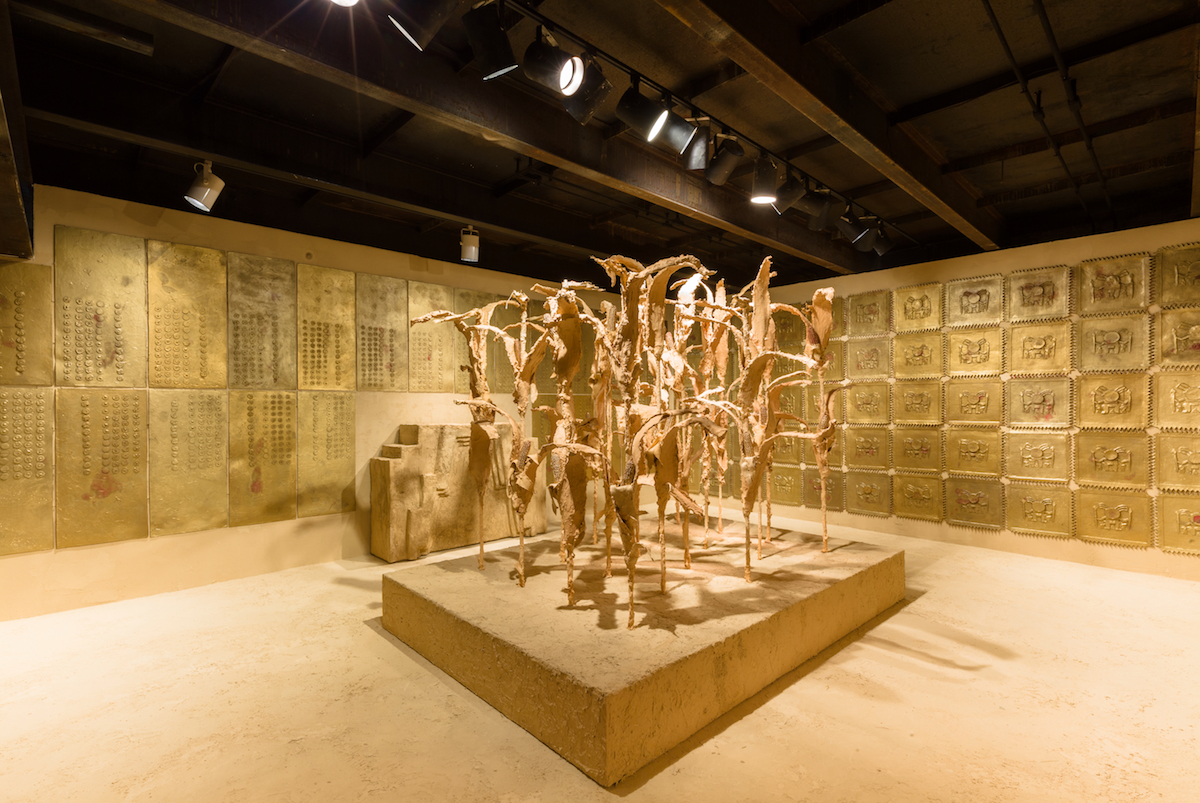
In Ransom Room, which has as its basis the gold taken from the Americas by Spanish conquistadors, a big question was the relative value of raw materials, gold in this case, and processed materials, i.e. art.
When Pizarro conquered the Inca empire [in 1532], he held the emperor Atahualpa ransom. To free him he demanded a fortune. There was a room, reportedly 17 by 22 feet high, maybe 7 feet tall — a room in the palace of Atahualpa’s father, in Cuzco. Pizarro ordered it filled once over with gold and twice with silver. Just an incredible volume of precious metal. The irony was that for the Inca gold had only a ritual value, not a monetary value.
So the ransom was slowly accumulated. All these gold and silver objects, carried by hand from the far corners of the empire. And at some point the Spanish became impatient, held a mock trial, killed the emperor, and melted down all these ritualistic objects into ingots, so that they could give each Spaniard the allotment that was owed to them. They kept a very good record of the allotment, but not the objects. It would also fit better onto the galleons, to go back to Spain.
At SculptureCenter, I resized the gallery to the same size as the ransom room, 17 by 22 feet. Initially in the center of the room there was this gold sculpture of maize — it looked like American supermarket corn, and not at all like what I saw at the Met when I finally let myself look at Incan artifacts.
I only saw the show once, but you kept filling the room up with “ransomed” gold objects over the run.
I cast all these objects in the “far corners of the empire,” which I took to be the outer boroughs of New York. At Pioneer Works [in Red Hook], or Socrates Sculpture Park [in Long Island City], or the offices of Cabinet [in Gowanus]. And every day, for about a month, I’d just fill up these big shopping bags, as much as I could physically carry, and then bring them on the subway. Usually during rush hour, six or seven o’clock. I’d get awful looks from people.
At the end of the show, all of the contents of the room were melted down into ingots. Including all the panels on the wall. Everything. You just ended up with this sad, stuccoed room with some pins left in the wall, and these ingots, which had this reddish tone with a swirl of gold.
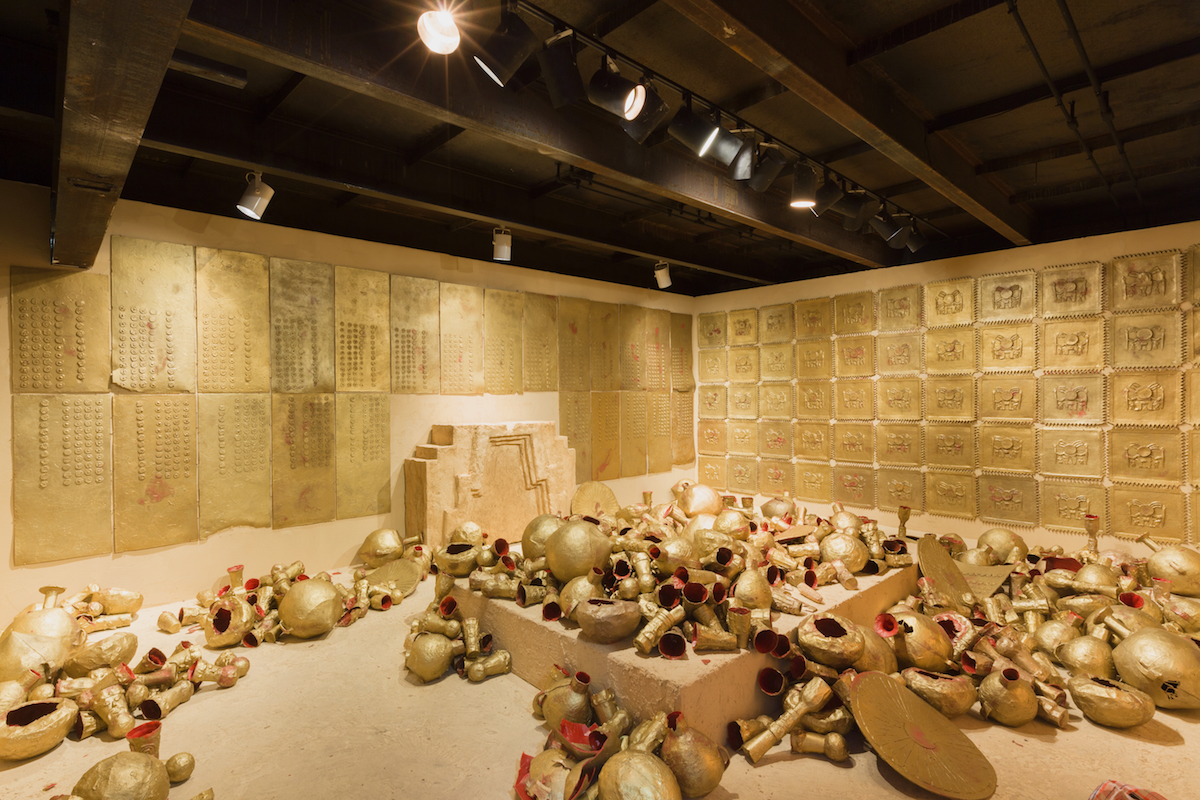
Totally impure. And therefore, in financial terms at least, worthless.
It’s funny, because someone at SculptureCenter told me that a few visitors complained that the corn they saw in images of the show wasn’t there anymore. “Can you bring back the old sculptures?” Sorry, it doesn’t come back!
Earlier in your career you took a specific interest not only in archaeology but in the classical tradition. There was one project where you built Rome in a day, another revolving around Troy, a third that looked at the Getty’s Greek collections...
It really happened by accident. I’d taken high school Latin, but nothing more than that. But I went to grad school during the George W. Bush presidency, and the classics, at that point, offered this back door to American politics, and a way out of the ossified binaries that surrounded Bush and Cheney and the Iraq war, which just felt like a dead end. There are such striking parallels between America and the Roman empire, and it would be interesting to restage some of those early pieces now.
In Boston, where I grew up, every red brick has a history. When I came to California, none of the materials that I would find on the side of the road were anything but garbage, really. Performance became a way to invest those objects with a history — and here, too, we don’t have this piety around history that one so often feels on the east coast or in Europe. I mean, the Getty Villa is paradise, but it’s also utterly fake.
Greek and Roman art is supposed to signify some apogee of human civilization, and yet in the art market it’s relatively cheap. For the price of just one contemporary painting in an auction evening sale you could buy hundreds of bronze helmets or painted vases.
You know how they try to get around that? By assigning authorship.
Oh, right, of course. You group a bunch of drinking vessels together and attribute them all to someone like the “Berlin Painter.”
Instead of thinking about the development of style, you come up with individual artists — painters, not potters. The classics really show how value is inherently declarative. Particularly in the instance of Heinrich Schliemann, who excavated Troy. He was digging for years, and he was out to prove that the Iliad and the Aeneid really happened, historically. Which is just so wrong-headed; a really beautiful idea, but just wrong.
And when an oddball with less wealth somewhere in the United States does that, people don’t take him very seriously. But Schliemann, this well-heeled entrepreneur, does it with this large crew working under him, and suddenly it becomes the gold of Troy. He just kept walking around and pointing at stuff, and shouting, “This is King Priam’s wall!” What I’m interested in is if more people can take on that power of conferring value on objects. And if it’s possible to upend value, because value is never inherent in the objects themselves.

Installation view. Anthony Greaney Gallery, Boston, MA.
These were of course also made against the backdrop of the financial crisis. The idea that you could take a bunch of shitty mortgages, bundle them together into a financial instrument, and just declare that the aggregate was as good as gold, was like Schliemann all over again.
None of that is over, and it’s happening now with tech valuations. One of the issues raised in this show at MASS MoCA is whether we’ll ever have to reconcile these declarative values with any kind of physical reality. Particularly now, when there’s so much software in trading, ash crashes, short-term volatility, we’re getting to the point where the technology exceeds human understanding. It’s not something I fully understand, but I feel it’s important to grapple with as an artist, because I also have the sense that people working with these technologies don’t understand it either.
The double-cross of your sculpture, though, is that while all these abstract questions of value percolate beneath the work, the objects themselves are explicitly handmade, unique, often with a rough surface...
To me, leaving the hand in everything, even in the cast plaster works, reasserts the subjectivity in the decision-making. As well as the relationship between time and money; I invest a lot of time in the performances, and that too proposes a different sort of value. Today art’s value is mostly speculative, but I’m rather old-fashioned. I believe in falling in love with an object, and that doesn’t square at all with how people value art at this point. I’m a little bit stubborn: I want to make all the plates in my house, I want them to be just so, I want to care about everything. And that is a different set of values.
Value and authorship were also a big part of your performances at LACMA. You started by looking at these big boys of sculpture, Calder, Serra, Rodin, and reinscribing time and human effort into their work.
I never had any interest in Rodin until that project [[de]-lusions of Grandeur: Monumentality and Other Myths (2014)]. I was just reading up on him, doing my due diligence, and then completely fell in love with his process, which I had no idea about. The monument to Balzac, for example, started at a very small scale, and changed across seven or nine versions of it. We think there’s a single Kiss or a single Thinker, a monolith. Actually there’s this continuous wrestling with the sculptures through the process of fabrication.
Wasn’t The Kiss part of The Gates of Hell originally?
A lot of them were. The Thinker, The Prodigal Son... But the works that I fell in love with were the tiny, hand-wrought ones. He made a model of Balzac’s frock coat in terracotta, about eight inches tall. I wanted to bring that character back into Rodin, which you can’t see in the posthumous casts in American museums. LACMA let me take molds of their Rodins because they were cast in 1965, and so they don’t recreate the original patina that Rodin had perfected during his lifetime. The surface of the metal is very at, not especially nuanced, whereas the ones made during his lifetime have this amazing, unphotographable layering...
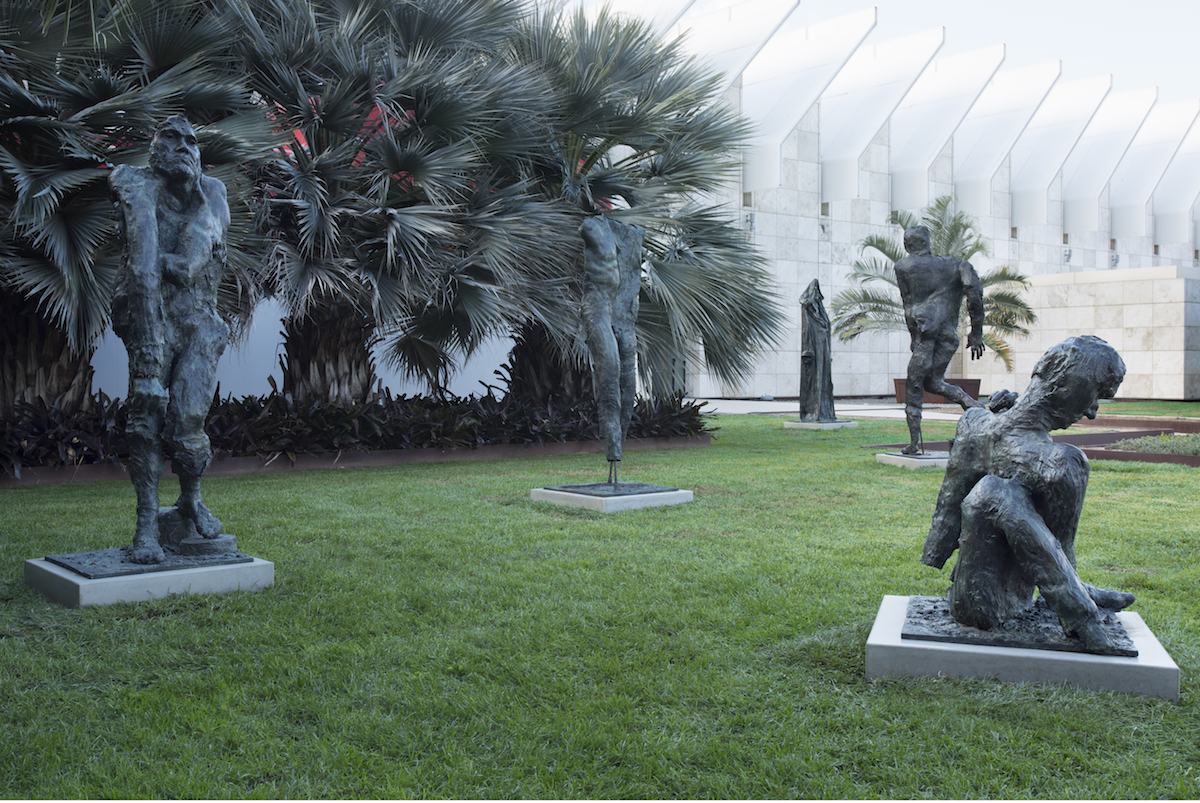
They look like topographic maps, almost.
Some art historians argue that the ones made circa 1965 shouldn’t be considered “real” Rodins. That was the only way I was able to get permission to make molds of them. It took six months, but Michael Govan [the director of LACMA] saw the value of putting a contemporary energy into these bronzes that a lot of people just walk right by.
We did this performance outside, in the garden, where we used the Rodins to create plasters that we never intended to treat as permanent sculptures. We had plaster, molds, clay, and we recreated this tool called a 3-D pantograph, an old contraption that’s basically the antecedent of the laser profilometer, to do enlargements. All to produce new, Frankenstein-like bodies from the Rodin works.
The next step in a chain, further and further from the myth of the singular sculpture. I saw the resultant bronzes in the garden of the Petit Palais [in Paris], and they look fearsome, deliquescent. Like burn victims.
When I saw the plasters in the LACMA garden, I thought: Oh, it would be really amazing to turn them back into bronze. And this time, to get the patina that Rodin had applied in his lifetime. The performance took two days, but making the bronzes took nine months. When I showed up at the foundry I thought I’d made a huge mistake — they looked dead, they didn’t look anything like Rodin! It was because the works from the performance were so fragmentary. There were all these voids in them.
Open House, the concrete copies of Gilded Age furniture you installed at the entrance to Central Park this year, employs a similar aesthetic of heavy material that seems in the process of decay.
When the Public Art Fund first approached me, I started looking at the basics of New York City parks, reading articles on JSTOR, and immediately all these texts popped up from the 1980s about how people using the parks were a problem. That people were like vermin. Which seemed so counter to the spirit of the public park, open to all. And having left New York in 2006, in part because of the economics — particularly as a sculptor, you need affordable space — I wanted to make a work that somehow addressed this issue of public and private space. What is the city going to look like, and who is going to have enough space to live?
Along Fifth Avenue, near the site where I ended up installing Open House, are all these Gilded Age homes, many of them designed by Stanford White, and I became fascinated in particular with their ballrooms. If you think of The House of Mirth, for instance, the ballroom is where all the socioeconomic issues play out — courtship has nothing to do with attraction, but everything to do with economic differentials and class dynamics. Of course, many of today’s economic statistics suggest that we’re living in a second Gilded Age, that income inequality has not been this great since the early 1900s.
I was just reading about how the likelihood of marrying out of your class has plummeted lately. Rich people are marrying rich people again. In Wharton’s day you could at least be one of the Buccaneers, and try to use your wiles and your beauty to get somewhere new. The meritocracy ends up being even more rigid than the aristocracy.
The parallels are never perfect, and this is why I wanted to take this image of the Gilded Age and recreate it as a ruin. Hence the use of concrete. Concrete is a populist material, meant for housing projects, park benches. A poor material. So the piece is not intended to be a judgment on one class, but rather to point to a larger economic system, and to ask, where are we going?
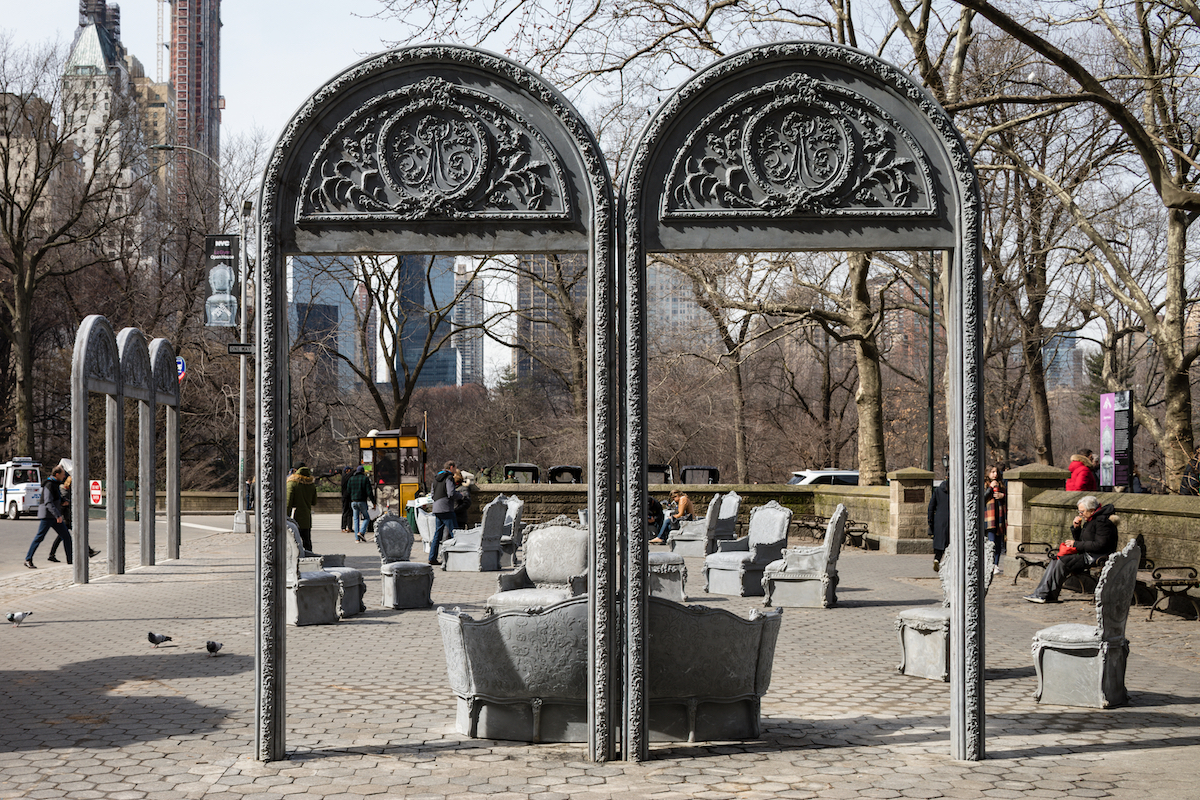
The other thing that I was thinking about with Open House was how the fantasy of the Gilded Age bleeds into today’s McMansion epidemic, the Kardashians... I only realized after starting that the site is two blocks away from Trump Tower, and Trump’s apartment is full of copies of Louis XIV furniture. The work began before the 2016 election cycle, but that fantasy and that imagery are no accident — it’s a much larger American fantasy.
How much has the election infuenced the coming show, given how central economics is to your work?
There’s a whole series of sculptures in the new show called The Shape of Progress. But since the election I’ve been thinking about whether progress ends, and whether we’ve taken it for granted.... I’ve read a lot of technology theory from the 60s, and what’s so interesting about writers like Buckminster Fuller, even Huxley to a lesser extent, but a lot of writers then thought we would solve poverty, racism would end, hunger would end. We were just heading towards their elimination. Those were fixable problems.
Which was true on both the left and the right. You could be a Marxist or a liberal or a Christian Democrat, but whichever way, you really did believe —
That we were headed towards this perfect future. And nothing could be further from the truth right now. This feeling of going backwards, falling off a cliff...there are two cliff sculptures in the show, actually. How quickly can progress be destroyed, or gains be eliminated? Very quickly, it turns out.
But it’s not a one-way street. And as an artist who’s deeply interested in politics, who’s a bit of an NPR junkie, it’s always been very clear to me that as much as I feel tied to radical traditions, I don’t feel that it’s my job to do what someone working in a policy context has to do. My role is much more to reframe the bounds of the question. I’m not responsible for creating a legislative proposal, but I can maybe change some small public conversation about how and in what terms we think about these things.
It is a bizarre assumption we make: that people who went to CalArts can somehow solve the world’s biggest problems.
I’m not the end authority on any of this. It happens very often that someone comes to see one of my shows, and they know more about the thing I’m referencing than I do. And that’s OK. That doesn’t stop me from thinking about that, or making a work that responds to that, because I’m not claiming the master narrative, ever. You only ever possibly know part of the story. Even when it comes to my own works, I only know part of the story. I’ve done participatory performances, not documented on video, meant to be experienced in real time, and years later people tell me stories of things I didn’t know happened. But that is the nature of history: a collection of dispersed memories...
...which then become rumors, which get transformed over time into truths.
That’s how I came to understand most of the history of LA performance art. Going to Black Pussy right after Jason [Rhoades] died, and just seeing the ruin of it. Hearing stories of early Mike Kelley performances from other artists. Hearing Barbara T. Smith talk about things that happened in the early 60s. Not by going to a museum and seeing things on a wall.
You know this already, but I can tell you that I have never seen New York with this much of an insecurity complex in my 34 years on this earth. The east coast fantasy of LA has reached extreme levels. Do you feel that LA has given you something that goes beyond space and time?
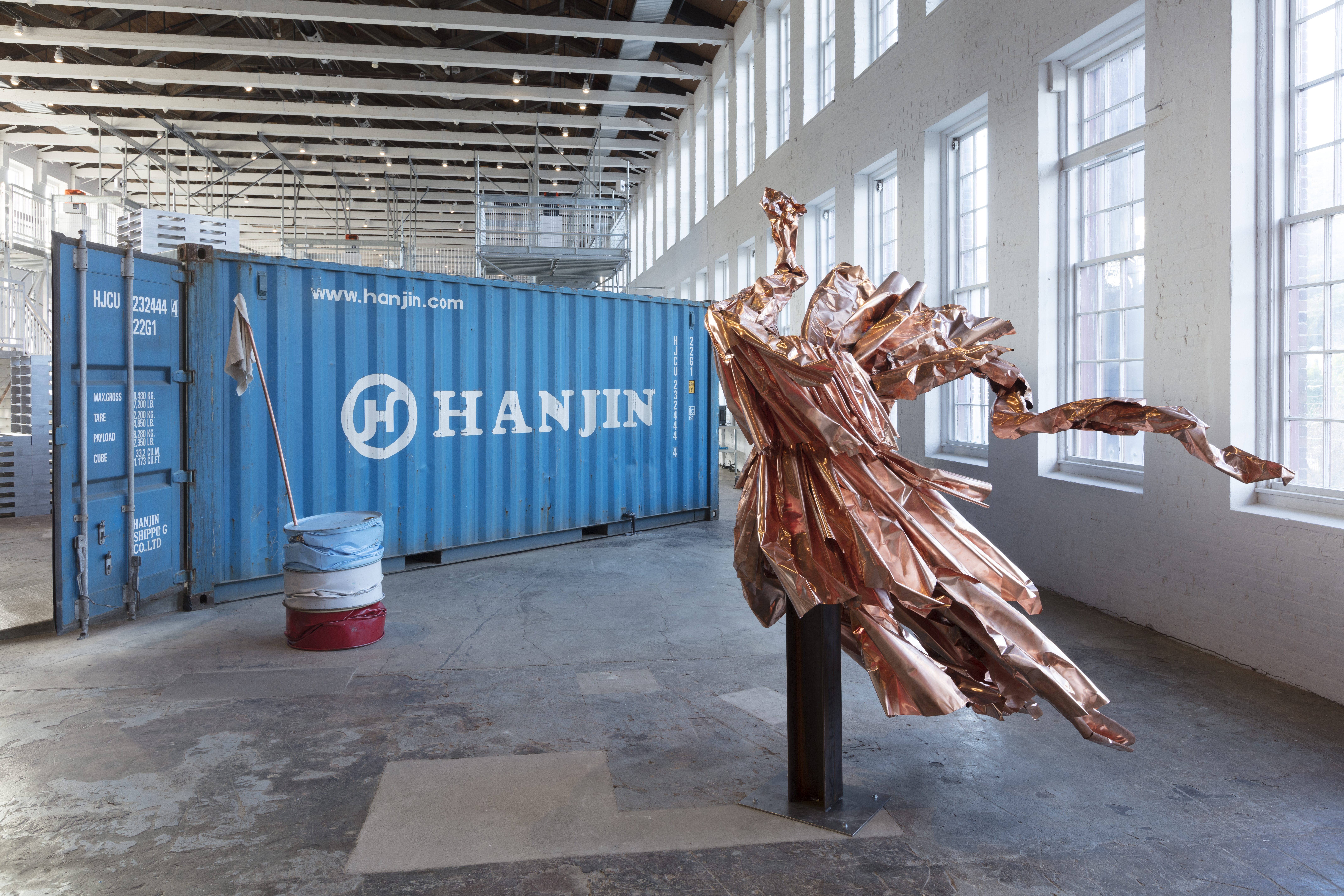
It’s a city that’s been driven by artists, rather than galleries or institutions. Certainly galleries and institutions are growing, in scale and number. But in large part because of the power of the art schools, there is a network of artists helping other artists.
After MASS MoCA I’m working on a project out in the California desert. It starts from the architecture of this palace of Nero, from after the great fire in Rome...
The Domus Aurea.
Exactly. And I am creating a structure that uses its footprint, but it’s slammed into a distressed property in the California desert. It will host a series of performances out there about the question of who gets to live the good life. That’s an off-site, non-institutional project, and I’m giving myself no deadlines.
So we’ll see — but that possibility of making art that isn’t only for exhibitions or institutions is essential. One of my first big performances happened in my friends’ backyard. It only happened because they were willing to do it in their rental, which is crazy.
In New York you would have a co-op board shutting you down within an hour.
I just have a much more extensive set of possibilities than I ever would have had in New York. I worry for New York artists: some of the resources that allowed artists to be generous to other artists are under threat. Here I still see younger artists, studio assistants or students I’ve had, who continue to do shows in their living rooms, in their backyards, on the side of their studio, in storefronts.... And that energy — you’re not sitting in your studio waiting for the phone to ring, you have no reason not to go out and do whatever you want — is what makes LA LA.